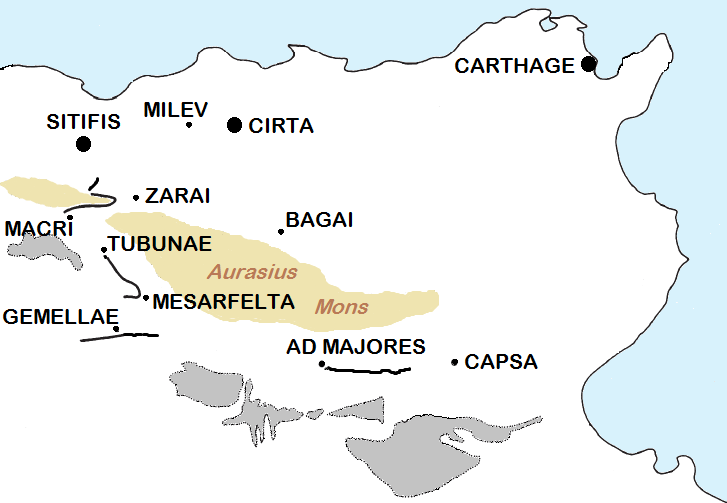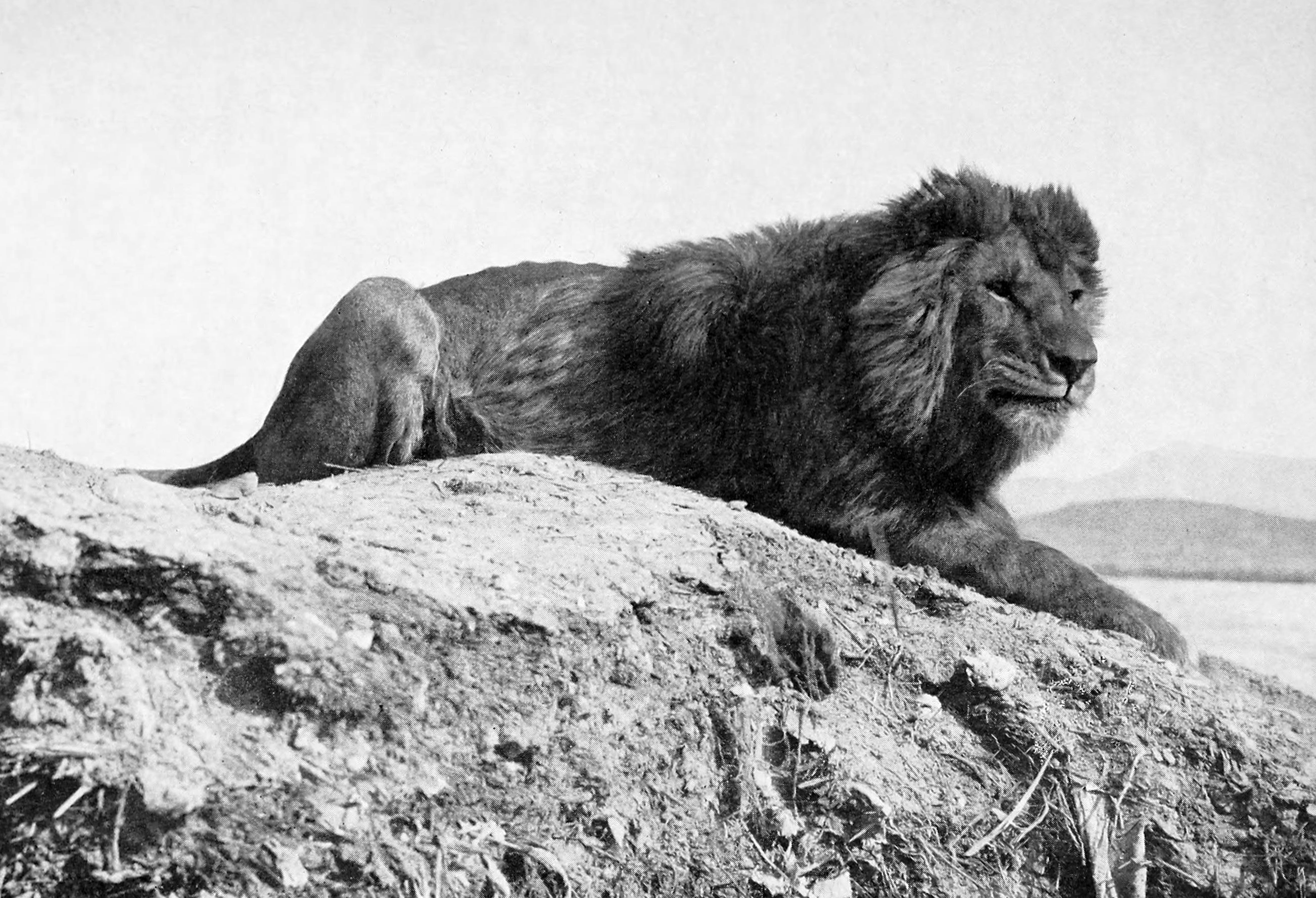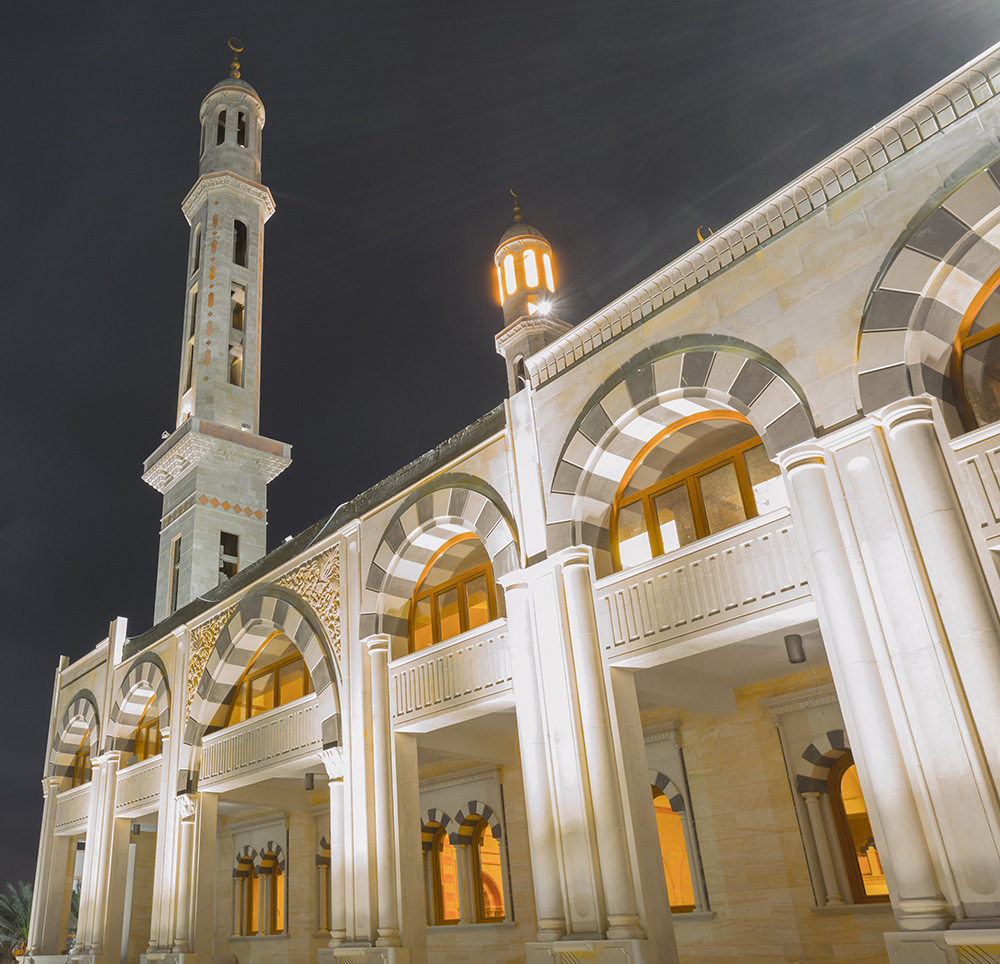|
Abbasid Conquest Of Ifriqiya
The Abbasid conquest of Ifriqiya was an armed campaign in 761 against Kharijite Ibadites in Ifriqiya (present-day Tunisia, eastern Algeria and Tripolitania) led by Muhammad ibn al-Ash'ath al-Khuza'i on behalf of the Abbasid Caliphate. By the end of the campaign, the Abbasids brought the political domination of the Ibadites in Ifriqiya to an end, and recovered Abbasid authority in the Maghreb as far as eastern Algeria. Background Umayyad rule in the Maghreb came to an end in 747 once the Fihrids, descendants of Uqba ibn Nafi, seized power in Ifriqiya while taking advantage of the Abbasid Revolution against the Umayyad Caliphate. The Fihrids controlled all of Tunisia, excluding the southern parts that were under the influence of the Warfajuma Berber tribe, who were associated with the Sufri Kharijites. Fihrid rule collapsed in 756 when the Warfajuma successfully conquered northern Ifriqiya and captured Kairouan. Immediately afterward, the Ibadiyyah in Tripolitania proclaimed ... [...More Info...] [...Related Items...] OR: [Wikipedia] [Google] [Baidu] |
Ifriqiya
Ifriqiya ( '), also known as al-Maghrib al-Adna (), was a medieval historical region comprising today's Tunisia, eastern Algeria, and Tripolitania (roughly western Libya). It included all of what had previously been the Byzantine province of Africa Proconsularis and extended beyond it, but did not include the Mauretanias. To the south, Ifriqiya was bounded by the semi-arid lands and salt marshes named el-Djerid. The northern boundary fluctuated from as far north as Sicily to the North African coastline, and the western boundary usually reached Béjaïa. Ifriqiya is bordered to the west by the Central Maghreb, with which the borders are fluid depending on the chroniclers and the eras. The capital was briefly Carthage, then Kairouan, Qayrawan (Kairouan), then Mahdia, then Tunis. The Aghlabids, from their base in Kairouan, initiated the invasion of Southern Italy beginning in 827, and established the Emirate of Sicily, which lasted until it was conquered by the Normans, and the s ... [...More Info...] [...Related Items...] OR: [Wikipedia] [Google] [Baidu] |
Tobna
Tobna (), also known by the ancient names of Tubunae or Thubunae, is a ruined former city in Batna Province of Algeria, located just south of the modern city of Barika. From this position, it once controlled the eastern part of the Hodna region, while M'Sila did the west. It flourished from the time of the Roman Empire through the Islamic Middle Ages until it was sacked and destroyed by the Banu Hilal in the 11th century, after which it was finally abandoned. Poorly documented by archaeologists today, Tobna's ruins occupy an extensive area and include the remains of a Byzantine fortress as well as the traces of a wall covering a 950 m by 930 m area. History The site of Tobna is poorly studied by archaeologists as of 2019. The same is true of the surrounding Hodna region in general. Jean Baradez's aerial surveys in Algeria, published in 1949, provided the first aerial images of the site. From this data, he worked on reconstructing the Roman road network surrounding the city. On ... [...More Info...] [...Related Items...] OR: [Wikipedia] [Google] [Baidu] |
Biskra Province
Biskra (, Berber: ⴱⴻⵙⴽⵔⴰ) is a province (''wilaya'') of Algeria. Its capital is Biskra. It is located on the northern edge of the Algerian Sahara, south of the Atlas Mountains. Geographically, Biskra Province is arid, but oases and rivers can be found, such as the Djedi River which flows through the province. The mountainous Aurès region also extends into the province. Biskra Province is home to the district of Tolga, which is well-known internationally for its high-quality Deglet Nour dates. Other localities include Lichoua, Sidi Okba, Sidi Khaled, and El-Kantara. In 2019, several communes were removed from the province to form the new Ouled Djellal Province. History Berber tribes The Biskra area has been inhabited since at least the 3rd millennium BC, when the Gaetuli, an ancient Berber tribe, arrived in North Africa. They settled in the Aurès region, where they posed problems to Roman infiltration in the 3rd century BC as they were stellar horseme ... [...More Info...] [...Related Items...] OR: [Wikipedia] [Google] [Baidu] |
Tiaret
Tiaret () or Tahert () is a major city in northwestern Algeria that gives its name to the wider farming region of Tiaret Province. Both the town and region lie south-west of the capital of Algiers in the western region of the Hautes Plaines, in the Tell Atlas, and about from the Mediterranean coast. It is served by Abdelhafid Boussouf Bou Chekif Airport. Etymology The name means "Lioness" in the Berber language, a reference to the Barbary lions that lived in this region. Maghrebian place names like Oran (''Wahran'') which means "lion", and Souk Ahras which means "Market of Lions" have the same etymological source. Population The town had a population of 178,915 in 2008. The town covered around 20.086.62 km2. Infrastructure and industry A 1992 study by the University of Nice Sophia Antipolis reported significant areas contaminated by industrial pollution, and growing squatter settlements on the periphery. The region is predominantly one of agriculture. There is a ... [...More Info...] [...Related Items...] OR: [Wikipedia] [Google] [Baidu] |
Oran
Oran () is a major coastal city located in the northwest of Algeria. It is considered the second most important city of Algeria, after the capital, Algiers, because of its population and commercial, industrial and cultural importance. It is west-southwest from Algiers. The total population of the city was 803,329 in 2008, while the metropolitan area has a population of approximately 1,500,000, making it the second-largest city in Algeria. Etymology The word ''Wahran'' comes from the Berber expression ''wa - iharan'' (place of lions). A locally popular legend tells that in the period around AD 900, there were sightings of Barbary lions in the area. The last two lions were killed on a mountain near Oran, and it became known as ''la montagne des lions'' ("The Mountain of Lions"). Two giant lion statues stand in front of Oran's city hall, symbolizing the city. History Overview During the Roman Empire, a small settlement called ''Unica Colonia'' existed in the area of the current ... [...More Info...] [...Related Items...] OR: [Wikipedia] [Google] [Baidu] |
Libya
Libya, officially the State of Libya, is a country in the Maghreb region of North Africa. It borders the Mediterranean Sea to the north, Egypt to Egypt–Libya border, the east, Sudan to Libya–Sudan border, the southeast, Chad to Chad–Libya border, the south, Niger to Libya–Niger border, the southwest, Algeria to Algeria–Libya border, the west, and Tunisia to Libya–Tunisia border, the northwest. With an area of almost , it is the 4th-largest country in Africa and the Arab world, and the List of countries and outlying territories by total area, 16th-largest in the world. Libya claims 32,000 square kilometres of southeastern Algeria, south of the Libyan town of Ghat, Libya, Ghat. The largest city and capital is Tripoli, Libya, Tripoli, which is located in northwestern Libya and contains over a million of Libya's seven million people. Libya has been inhabited by Berber people, Berbers since the late Bronze Age as descendants from Iberomaurusian and Capsian cultures. I ... [...More Info...] [...Related Items...] OR: [Wikipedia] [Google] [Baidu] |
Misrata
Misrata ( ; , Libyan Arabic: ; also spelled Misratah and known by the Italian spelling Misurata) is a city in northwestern Libya located in the Misrata District, situated to the east of Tripoli on the Mediterranean coast near Cape Misrata. With a population of about 881,000, it is the third-largest city in Libya, after Tripoli and Benghazi. It is the capital city of the Misrata District and has been called the economic and trade capital of Libya. Its harbor is at Qasr Ahmad. Etymology The name "Misrata ⵎⵙⵔⴰⵜⴰ" derives from the Misrata tribe, a section of the larger Berber Hawwara confederacy, whose homeland in Antiquity and the early Islamic period was coastal Tripolitania.Deadly fighting rages in Libya's Bani Walid . '' |
Tawergha
Tawergha (Berber: ⵜⴰⵡⴻⵔⵖⴰ, ), also transliterated ''Tawargha'', ''Tawarga'', ''Tauorga'', ''Taworgha'', ''Tawurgha'' or ''Torghae'', is, as of May 2021,Murray, Rebecca"One Year Later, Still Suffering for Loyalty to Gaddafi" ''Inter Press Service'' Retrieved 24 August 2012. a former ghost town in Libya that is under administrative jurisdiction of the city of Misrata, which is 38 kilometers away. It was the site of intense fighting during the Libyan Civil War before it was captured and forcibly evacuated by anti-Gaddafi forces in August 2011. By the end of the war in October 2011, the town was largely cleared of its population by NTC militias. During Libya's political transition period, members of the General National Congress reportedly indicated they would like to see Tawerghan refugees restored to their homes, but expressed concern over their safety. There have been numerous reports of militias acting outside the authority of the Tripoli-based government threat ... [...More Info...] [...Related Items...] OR: [Wikipedia] [Google] [Baidu] |
Mashriq
The Mashriq (; ), also known as the Arab Mashriq (), sometimes spelled Mashreq or Mashrek, is a term used by Arabs to refer to the eastern part of the Arab world, as opposed to the Maghreb (western) region, and located in West Asia and eastern North Africa. It is the Arabic equivalent for the term Middle East. Poetically the "Place of Sunrise", the name is derived from the verb ''sharaqa'' (, "to shine, illuminate, radiate" and "to rise"), from the sh-r-q root (), referring to the east, where the sun rises. The region includes the Arab-majority states of Bahrain, Egypt, Iraq, Jordan, Kuwait, Lebanon, Oman, Palestine, Qatar, Saudi Arabia, Sudan, Syria, the United Arab Emirates, and Yemen. Geography As the word ''Mashriq'' refers to Arab countries located between the Mediterranean Sea and Iran, it is the companion term to ''Maghreb'' (), the western half of the Arab world comprising Algeria, Morocco, Tunisia, and Libya. Libya may also be regarded as straddling the two regions ... [...More Info...] [...Related Items...] OR: [Wikipedia] [Google] [Baidu] |
Middle East
The Middle East (term originally coined in English language) is a geopolitical region encompassing the Arabian Peninsula, the Levant, Turkey, Egypt, Iran, and Iraq. The term came into widespread usage by the United Kingdom and western European nations in the early 20th century as a replacement of the term Near East (both were in contrast to the Far East). The term "Middle East" has led to some confusion over its changing definitions. Since the late 20th century, it has been criticized as being too Eurocentrism, Eurocentric. The region includes the vast majority of the territories included in the closely associated definition of West Asia, but without the South Caucasus. It also includes all of Egypt (not just the Sinai Peninsula, Sinai) and all of Turkey (including East Thrace). Most Middle Eastern countries (13 out of 18) are part of the Arab world. The list of Middle Eastern countries by population, most populous countries in the region are Egypt, Turkey, and Iran, whil ... [...More Info...] [...Related Items...] OR: [Wikipedia] [Google] [Baidu] |
Kairouan
Kairouan (, ), also spelled El Qayrawān or Kairwan ( , ), is the capital of the Kairouan Governorate in Tunisia and a UNESCO World Heritage Site. The city was founded by the Umayyads around 670, in the period of Caliph Mu'awiya (reigned 661–680); this is when it became an important centre for Sunni Islamic scholarship and Quranic learning, attracting Muslims from various parts of the world. The Mosque of Uqba is situated in the city.Europa Publications "General Survey: Holy Places" ''The Middle East and North Africa 2003'', p. 147. Routledge, 2003. . "The city is regarded as a holy place for Muslims." Etymology The name ( ''al-Qayrawān'') is an Arabic word meaning "military group" or "caravan", borrowed early on from the Middle Persian word ''kārawān'' (modern Persian ''kârvân''), meaning "military column" (''kâr'' "people/military" + ''vân'' "outpost") or " caravan" (see caravanserai). In Berber, the city used to be called ''Tikirwan'', thought to be an adaptatio ... [...More Info...] [...Related Items...] OR: [Wikipedia] [Google] [Baidu] |




